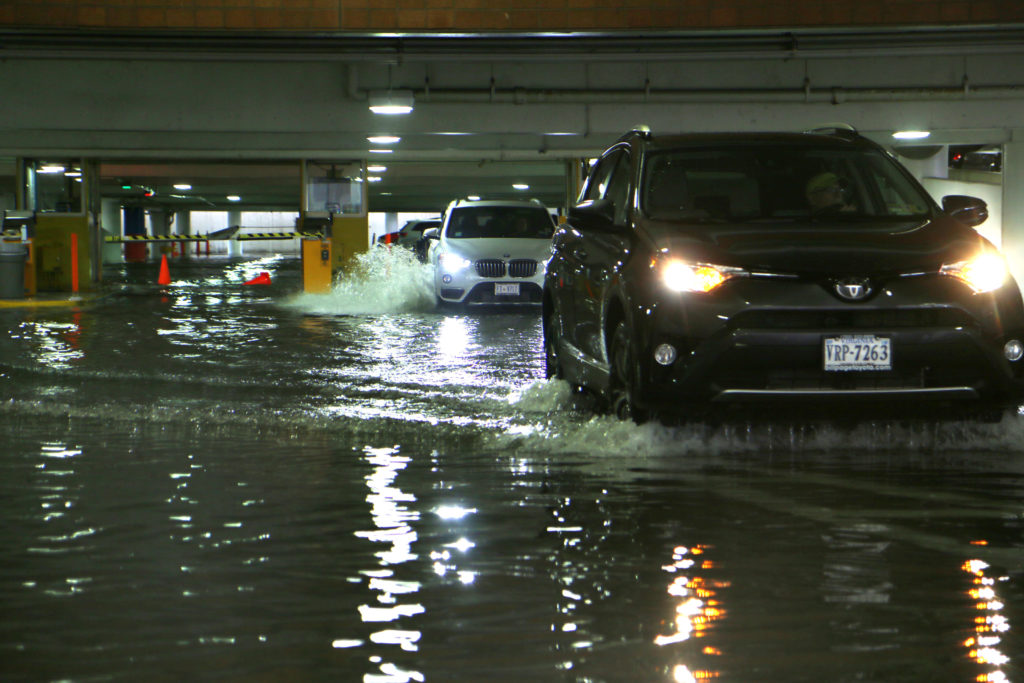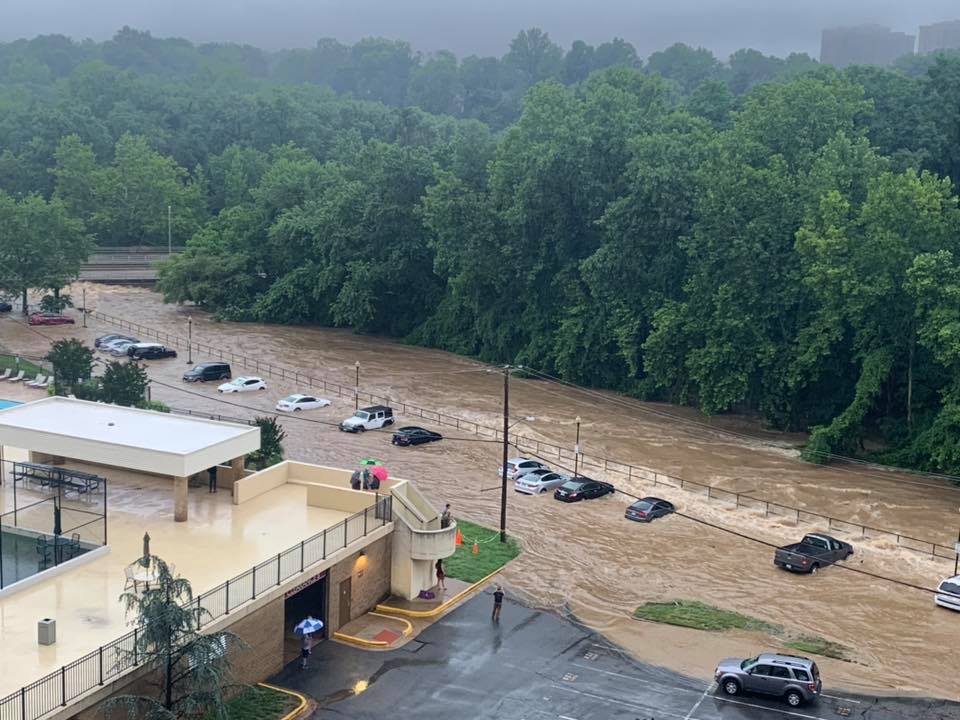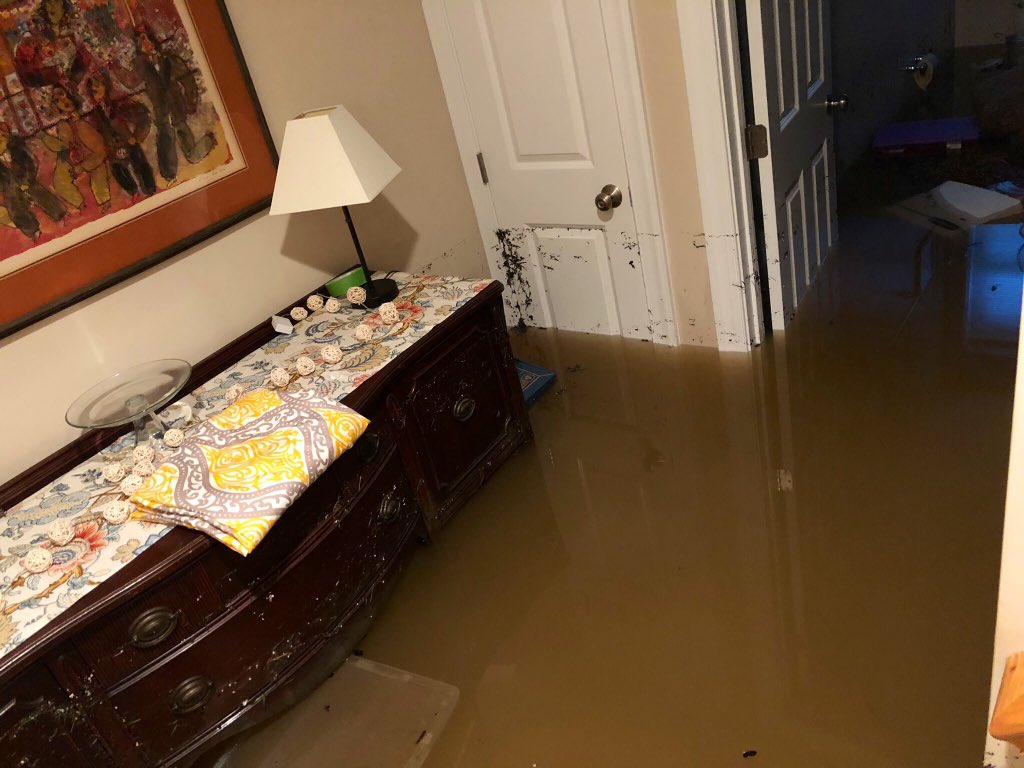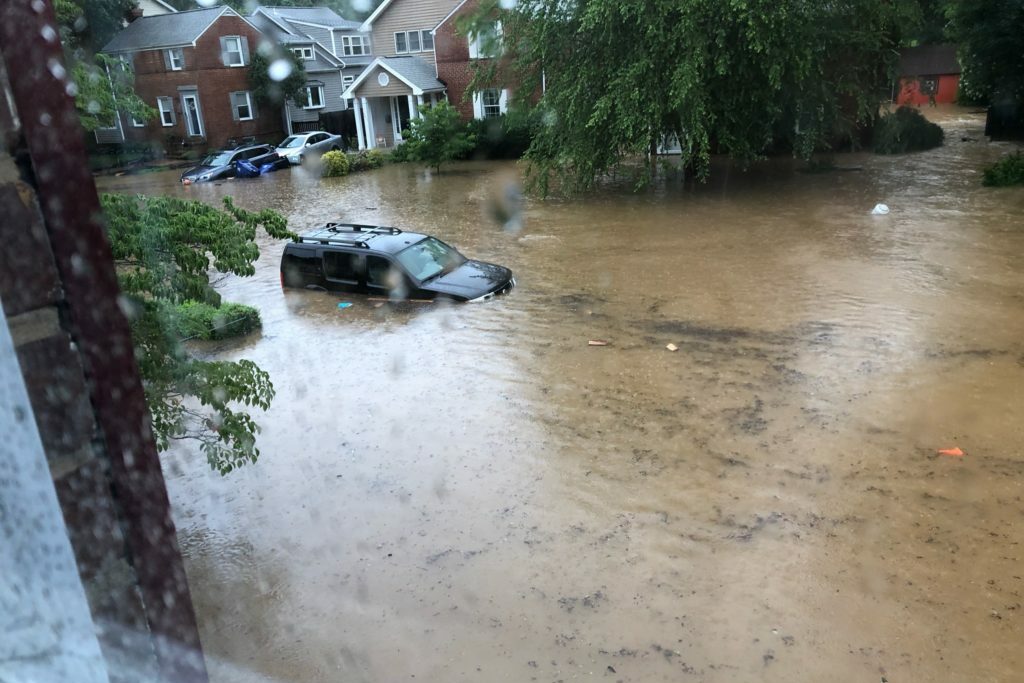This week’s devastating flash floods may be evidence of a bigger weather pattern shift, some experts say.
The storm that pummeled the Arlington dumped 3.3 inches of rain in one hour Monday morning, breaking the regional record. Some experts say this is part of a larger pattern of wetter weather — and possibly climate change.
The so-called supercell developed in Frederick County, Virginia, where NWS Meteorologist Jason Elliott says cool, dry winds from the north met with warm, wet winds from the south. From there the storm — which was about the side of Montgomery County, Md. — travelled about 20 miles per hour towards southern Maryland.
Unfortunately for Arlington, the heaviest part of the storm travelled down the Potomac River — straight through Fairfax County, Arlington County, Alexandria and D.C. — overwhelming stormwater management systems and filling streets, homes, and businesses with water.
When a rainstorm hits, the runoff water not absorbed into the ground travels into the county’s stormwater pipes. However, too much water can fill the pipes, and flow out of manholes and storm drains.
“Water will then flow underneath of a road or a bridge and a stream will fill up and flow on top of a road or culvert,” said Aileen Winquist, Arlington’s Stormwater Management Program Manager. “That’s where damage can occur.”
Monday’s storm not only turned streams and streets into raging rapids, but also caused sewage backups in homes. Winquist said this is usually caused by water flooding sewer pipes and coming up through the floor drains in basements. It’s a problem residents in Westover and elsewhere face as they continue to recover from the flooding.
The county’s storm and sewer systems are overall in “good condition”, Winquist said, and crews continuing to repair corroded storm pipes and re-line old sewer pipes as needed.
“Typically the storm sewer system is designed for what’s known as a 10 year storm,” she added, referring the federal classification of a storm that has a 10% chance of occurring once every 10 years.
“It was easily raining 5 inches in an an hour, for half an hour,” said Elliot. “And nothing can handle something that heavy in that short a period of time.”
The county keeps a detailed map of every location in Arlington damaged in a flood and uses it prepare for future emergencies and prioritize routine repairs. Winquist declined to share a copy of the map, citing privacy concerns, but noted that Westover was not among the neighborhoods filled with water during Arlington’s last major flood back in 2006.
New flood plains can be caused by a variety of factors, such as problems with the storm water pipes or nearby development projects. But there’s also the issue of storms getting stronger and wetter.
Elenor Hodges, executive director of local advocacy group EcoAction Arlington, said one symptom of global warming was more extreme weather.
“As our planet gets warmer there is more rain,” said Hodges. “I think we can then kind of connect the dots as to why we have more storms.”
The Greater Washington area has experienced a number of extreme storms and weather patterns in the last two decades. Last year broke the 1886 record for wettest year ever recorded, and three of the top ten snowiest storms recorded the region have occurred since 2000.
Arlington also faced massive flooding in 2006, and perhaps the worst hurricane to ever hit Virginia, Hurricane Ivan, carved a path of destruction in 2004.
Elliot said he couldn’t say whether the storms are linked to climate change, but did say data indicates the weather patterns for the last 15 years have been unusually wet.
“We have been in a wetter cycle lately,” he said. “For whatever reason.”
For now, meteorologists are keeping an eye on Tropical Storm Barry and trying to forecast where it will travel as it heads north.
“We always have to be ready for the next one,” Elliott said. “There will probably be another [flood] at some point, and probably in the same spot at some point.”
Hodges noted that most measures needed to prevent climate change need to happen on the federal level, and commended Arlington for its commitment to fight climate change locally. But she said if climate change predictions of more rain are true, it’s critical the county invest in “resilience” and keep its stormwater, sewer, and streets systems in peak condition.
“I’ve heard people say — and I think agree with them — that people take action when there an emergency,” Hodges said. “When is all of this going to ratchet up enough?
In April, the Department of Environmental Services warned that groundwater levels were an average of 5 feet higher than the past two years. One problem with higher groundwater levels? Higher risk of flooding.
Winquist said groundwater levels decreased in May. But she warned that levels could rise again if more heavy rain storms arrive this summer.
“I think things like July 8th will happen again,” said Hodges. “These aren’t going to be few and small.”






